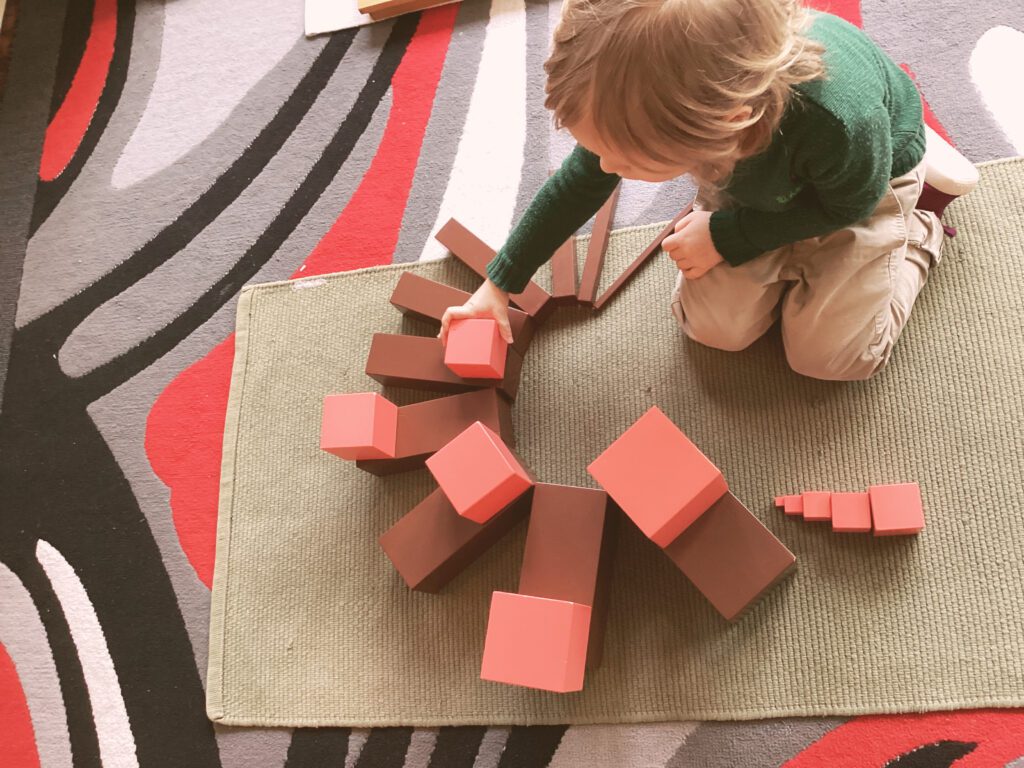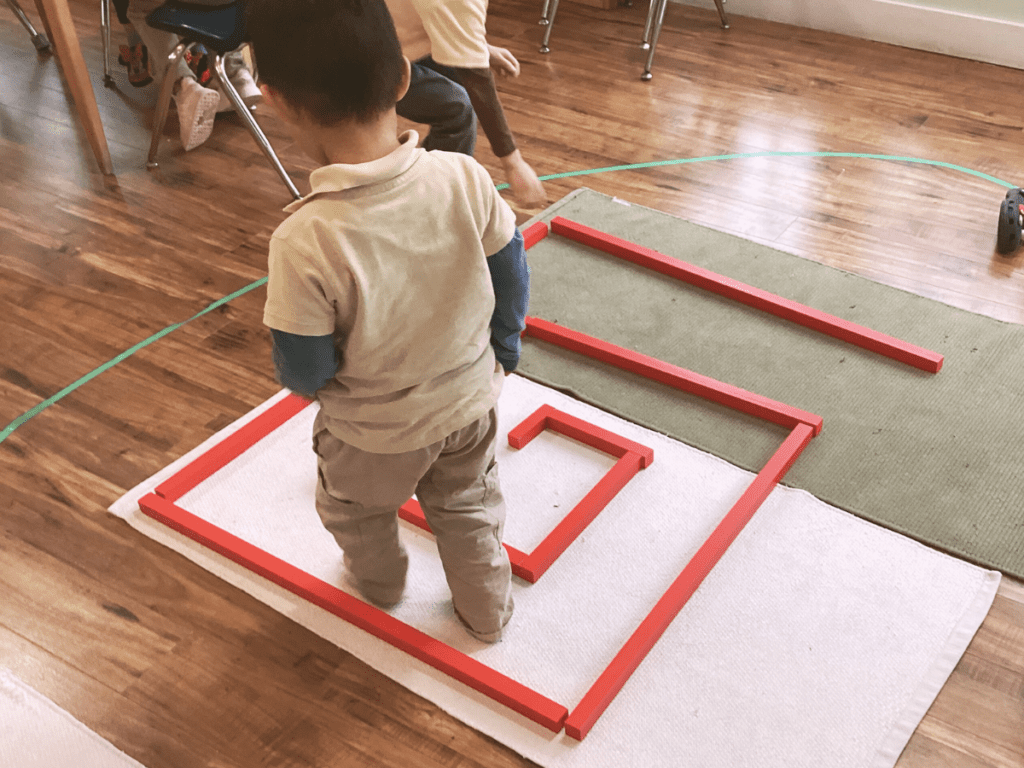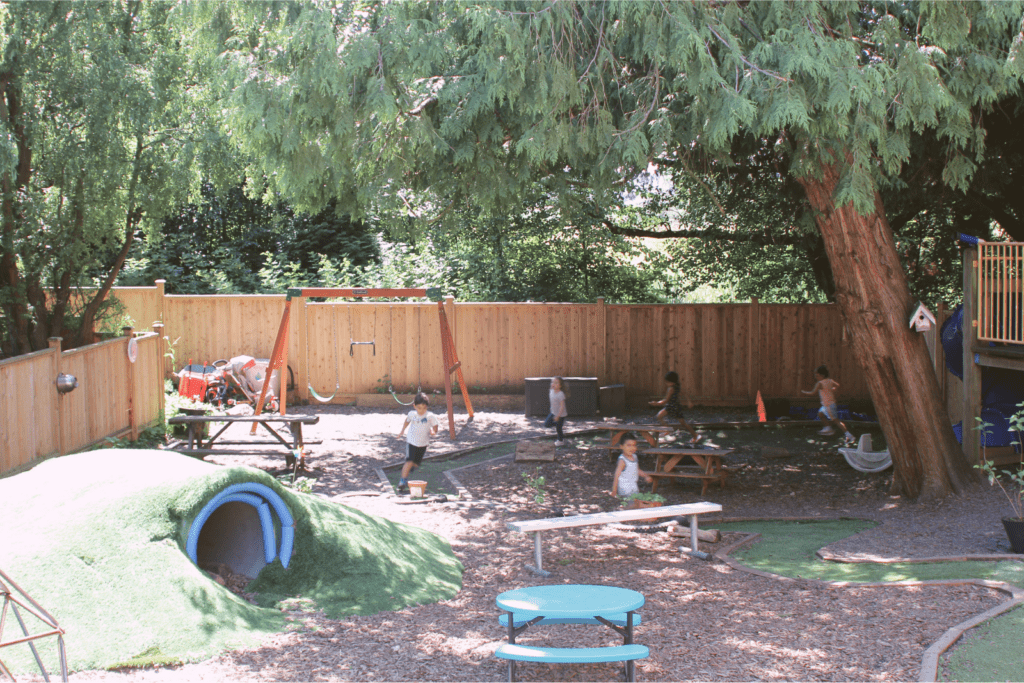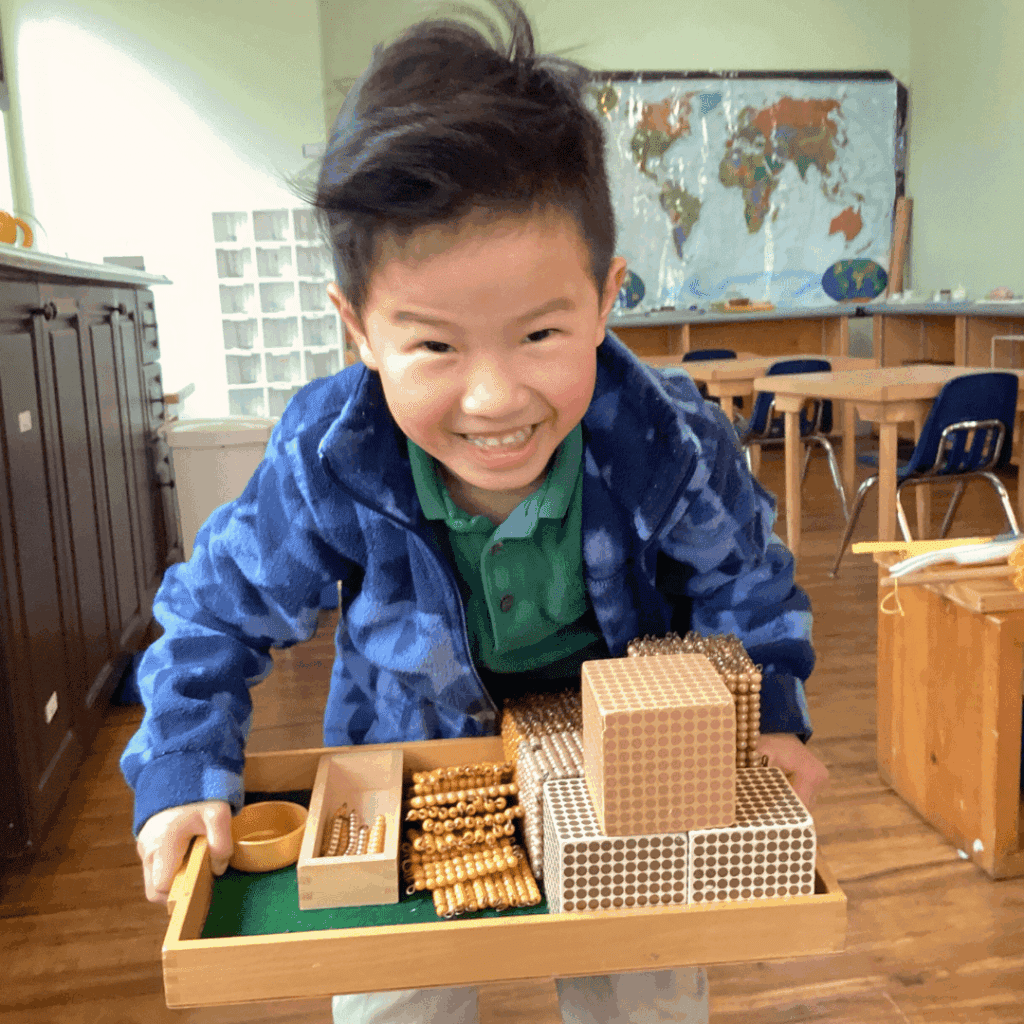Montessori and play-based learning… are remarkably complementary.
While Montessori education and play-based learning might seem distinct at first glance, a closer examination reveals a beautiful synergy between the two approaches. At Roots & Wings we witness the benefits of both philosophies each day in our preschool and daycare. Our Montessori-designed classroom materials complement imaginative playtime in our nature playground!
Let’s explore how these philosophies complement each other to foster holistic child development.

Montessori and play-based learning, while often perceived as separate educational philosophies, are remarkably complementary. Both prioritize the child’s natural curiosity, intrinsic motivation, and active participation in the learning process. However, they achieve this through slightly different pathways, creating a powerful synergy when combined effectively.
Montessori’s Structured Approach:
The Montessori method employs a structured environment with carefully designed materials that encourage self-directed learning. Children are free to choose what interests them, whether it’s building towers, solving puzzles, or exploring the world of language. They work independently or with friends, always supported by a caring teacher, or “directress,” who gently guides them along the way. This structure provides a framework for exploration, allowing children to learn at their own pace and develop essential life skills such as independence, concentration, and problem-solving.
Play-Based Learning’s Open-Ended Exploration:
Play-based learning, on the other hand, emphasizes the importance of free, unstructured play as a primary vehicle for learning. Children engage in imaginative, creative, and social play, exploring their world through experimentation, interaction, and self-expression. This approach nurtures creativity, social-emotional development, and cognitive flexibility.
The Synergy:
The beauty of these two approaches lies in their shared emphasis on child-centered learning and their complementary strengths. It’s like a beautiful dance, where Montessori‘s structured environment provides a strong foundation of knowledge and skills, like building blocks for a magnificent castle. And then, play-based learning comes in, allowing children to use those building blocks to create their own unique and imaginative structures, letting their creativity soar. It’s a perfect partnership, where each approach complements the other, creating a rich and fulfilling learning experience for every child. For example, a child might learn about fractions using Montessori materials, then use this understanding to create a pretend bakery, dividing pretend cakes into fractions during imaginative play.
It’s like a warm embrace for the whole child – intellectual, social-emotional, and physical development all nurtured and celebrated.

Practical Examples:
Sensorial Materials: It’s like giving children a hug for their senses! Montessori sensorial materials, designed to refine a child’s senses, become magical tools for imaginative play. A child might use the colored cylinders to build towers, creating a fantastical castle or a vibrant cityscape.
Practical Life Skills: These aren’t just chores; they’re opportunities for joyful growth! Activities like pouring, buttoning, and lacing, integral to the Montessori curriculum, build fine motor skills that are directly applicable to play. A child with well-developed fine motor skills can construct intricate Lego creations, draw detailed pictures, or paint a beautiful landscape, all with newfound confidence and ease.
Language Development: It’s like opening a door to a world of stories! Montessori‘s language materials, such as the sandpaper letters and movable alphabet, are more than just tools; they’re invitations to discover the joy of reading and writing. This strong foundation empowers children to write their own tales, create play scripts, and engage in richer, more imaginative games with their friends.
Mathematical Concepts: Numbers come alive! Montessori’s hands-on approach to mathematics lays the groundwork for children to understand numerical concepts. Children grasp numerical concepts with ease, applying this understanding in various play scenarios such as building structures with blocks, playing board games, or engaging in pretend shopping activities (like the classroom favourite Bring Me Game!).
Beyond the Classroom: The principles of both Montessori and play-based learning extend beyond the classroom. Parents can incorporate both approaches at home by providing structured learning opportunities alongside ample time for free play. This balanced approach allows children to develop both academic skills and essential social-emotional competencies, building a strong foundation for life.

Conclusion:
The combination of Montessori’s structured learning and play-based learning’s open-ended exploration creates a powerful and holistic educational experience. It’s like a warm embrace for the whole child – intellectual, social-emotional, and physical development all nurtured and celebrated. By embracing both approaches, educators and parents can foster a lifelong love of learning and help children grow into well-rounded, confident individuals. The structured environment provides the tools and knowledge, while play provides the context for application, creativity, and social interaction. Together, they create a dynamic and enriching learning journey for every child.


Are you looking for a Montessori school for your child? Download our handy checklist for reference during your next preschool tour: What to Look for In a Montessori Preschool.
Want to learn more? Contact us today for a tour!





